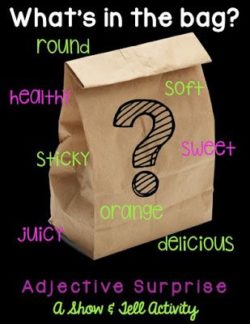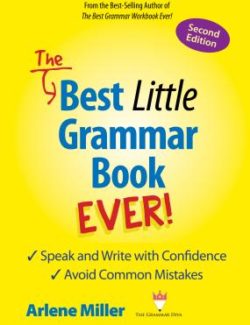 What???? There is actually grammar news? I think so. Someone (thank you, Murray) sent me a copy of a Tweet about adjectives. I found it interesting and thought perhaps I would take his advice and do a blog post about it. Then, I saw it popping up in other places on the internet. It is something that you know, but you don’t know you know it. And, actually, if English is not your native language, perhaps you don’t take it for granted. What is this mysterious adjective thing?
What???? There is actually grammar news? I think so. Someone (thank you, Murray) sent me a copy of a Tweet about adjectives. I found it interesting and thought perhaps I would take his advice and do a blog post about it. Then, I saw it popping up in other places on the internet. It is something that you know, but you don’t know you know it. And, actually, if English is not your native language, perhaps you don’t take it for granted. What is this mysterious adjective thing?
Let’s say we have a truck. Truck, being a thing, is a noun. Now, let’s say it is a delivery truck. Hmmmm, I guess most, if not all, trucks are delivery trucks. That is the function of most trucks. But bear with me.
Let’s say this is a wooden truck (sounds more like a toy truck now, but let’s keep going). So, now it is a wooden delivery truck. And let’s say that this truck comes from Canada. It is now a Canadian wooden delivery truck.
The truck is red. It is a red Canadian wooden delivery truck. And let’s say it is square (rather than maybe rectangular). Now it is a square red Canadian wooden delivery truck.
You can tell by the fresh paint on the truck that this truck is quite new. In fact it is just a year old. It is a year-old square, red Canadian wooden delivery truck. Since this truck is square and not rectangular, we might guess that for a truck, it is on the small side. So, it is a smallish year-old square red Canadian wooden delivery truck.
Because this truck is new and painted red, it’s pretty shiny. It’s a shiny smallish year-old square red Canadian wooden delivery truck!
Yes, I know that there should be some commas in that long series of adjectives that all describe that one noun, truck. But since you probably wouldn’t ever string that many adjectives together before a noun anyway, let’s not worry about the commas right now.
So . . . we have a red square shiny wooden Canadian smallish delivery year-old truck, right?
Or is it a Canadian shiny wooden red delivery smallish year-old square truck?
No. Wait . . . it’s a delivery red smallish Canadian square year-old wooden shiny truck.
What’s going on here? Okay. There is one order in which to write adjectives before a noun (and you don’t have to have eight adjectives before the noun; you can have two or three or four). We don’t even think about it; we just know it sounds right that way. These just sound wrong:
- Green big ball (big green ball)
- Pepperoni large pizza (large pepperoni pizza)
- Wooden round table (round wooden table)
- Pink beautiful dress (beautiful pink dress)
Here is the “rule” we follow without even thinking. Adjectives in English must be in this order (or, as the original Tweet said, you will sound like a maniac):
opinion – size – age – shape – color – origin – material – purpose – noun
shiny – smallish – year-old – square – red – Canadian – wooden – delivery – truck
And now you know.
If you want to see the original tweet (and it looks like other interesting tweets, here is the link.
Grammar Diva News
This coming Sunday, September 11, I will be heading up the editing/proofreading table at the Redwood Writers roundtable. Here is the info.
I will be appearing at the Manteca BookFest on Saturday, October 8 and it’s free!
The Writer’s World Vendor Faire, sponsored by Bay Area Independent Publishers Association, takes place on November 12. I will be one of the vendors (editing), along with designers and a host of other vendors important to writers!
My new book, The Best Little Grammar Workbook Ever! will be available within the next few weeks. It can be used by itself or as a companion workbook to The Best Little Grammar Book Ever, Second Edition.





Dear Arlene,
Oxford grammar has a list and some great exercizes in an older addition that I’ve used for many years. I added to their list and find it more complete than any shared here.
1 article definitive pronouns etc (a, an, the, these, etc)
2 possession (my, Bob’s, etc)
3 quantity (four, many, numerous, etc)
4 opinion
5 size
6 age
7 other qualities not included in any other category including shape
8 color
9 origin
10 material
11 type
12 purpose
I created the following phrase to help my students. (By the way, according to Oxford, commas between adjectives are used only if you have more than one adjective in the same category. They can also be connected with ‘and.’)
Mr Green’s three cute small three-month-old mischievous, frolicky black and white Siamese furry female mousing kittens were looking under the Louis XV wooden coffee table at a small very frightened gray mouse.
I’m traveling right now but can give you more detail if interested when I get home.
Thanks for the comment and additional information, which I agree with! I also use the rule that if you can put “and” between the adjectives and it makes sense, use a comma– but with all those adjectives it gets petty confusing…not that anyone would actually use all those adjectives before a noun!
Hi Arlene
Thank you for the great article! Lovely style too! As a teacher to non-native students, I face this question often. Interestingly, I had written a blogpost in a similar vein http://www.thescorebuilders.com/on-the-pecking-order-of-adjectives/ in 2013.
What comes naturally to the native speaker often takes reasonable efforts for the non-native, and your article was certainly a great help!
Mayank
Thanks so much for the comments!
Thank you! Enlightening, as usual.
You are one brilliant well-portioned young humanoid American flesh-and-bone informative writer!
Ha! Thank you, and very clever of you!! Now we have to figure out where the commas go!
I always apreciate your refresher articles. You are a great English teacher who I can count on to keep my English as fresh as a daisy.
Thanks! You made my day!
Great summary, but you left out NUMBER at the beginning of your “rule”! That’s necessary so students know what to do to differentiate between just ONE truck and MULTIPLE trucks, as in the phrase: TWO shiny smallish year-old square red Canadian wooden delivery TRUCKS!
Amusingly, I have a section in my MICHIGAN PROFICIENCY SKILLS BUILDER (published by Cengage) that covers the very same ground, but I used the following example to start off the discussion: “What rules do native speakers of English use when they go into a restaurant and order two nice big juicy medium-rare T-bone steaks? They don’t follow any rules: the string of adjectives just rolls off their tongue. This ability takes years to develop, which is why learners tend to avoid using such phrases. …”
Over the years, I’ve had great success teaching this tricky area with a MNEMONIC: “NO SAS, COMKU!” introdued by a cartoon of a human reminding his robot (named COMKU) not to be sassy to his dinner guests. The robot is shown exiting stage right and mumbling to himself” NO SAS, COMKU! NO SAS COMKU” followed by this explication of the mnemonic:
NO stands for Number – Opinion
SAS stands for Size – Age – Shape
COMKU stands for Color – Origin – Material – Kind – Use
The book’s been out for almost 20 years, and I still get people coming up to me and saying “I’ve never forgotten that! Thank you!”
Thank you for the comment! I had actually never heard of this “rule” until this week, although when I looked up adjectives on Pinterest, I saw that there were some posters with this adjective order. The tweet I took it from didn’t have number, which, now that you mention it, is quite important, so thank you! And I assume number would always come first.
Hi Diane
My students found the NO SAS, COMKU! quite helpful and thank you for that! A few also improvised on it, (since there are twoi ‘S’ and two ‘O’) so now some of them have got around it by saying NOp SASh, COMKU!
Thanks for bringing fun in the classroom!
Should I say a bag full of adjectives?
You could say that!
Fascinating! Yes, we native English speakers do put the adjectives in order without thinking! I wonder if we do the same when speaking foreign languages that are not quite so native.
I didn’t find the link particularly informative.
I don’t speak another language, so I am not sure, but I would venture to say it wouldn’t come naturally in a foreign language. Also, I am not sure if other languages have similar rules about word order. Every language is different. Ah, are you asking if we would use the same order if we were speaking a oreign language — even if it were not so correct in another language? Good question!
Very interesting. Who knew?
The Brazilians are so backward they pile the adjectives behind the noun, Except sometimes. Oh well…
I guess some people knew, but I didn’t!
I speak a little of some other languages, and Spanish and Hebrew both use the adjectives after the noun.
Well, maybe I would know that if I had not dropped out of Hebrew School! I forget about French, but I think it might put the adjective before the noun like in English. I don’t remember how it is done in Latin. Anyone???
Thank you for sharing…teacher.
You are very welcome. My pleasure!